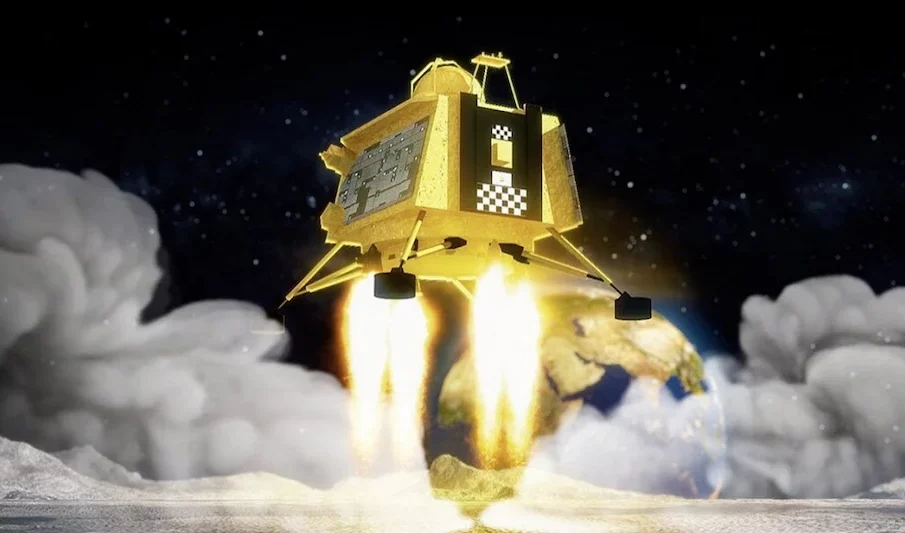Chandrayaan-3 Successfully Lands on the Moon: India’s Remarkable Lunar Exploration Continues

Table of Contents
Introduction
In a monumental leap for India’s space exploration endeavors, the Chandrayaan-3 mission has achieved a resounding success by successfully landing on the lunar surface. This triumph marks a significant milestone in India’s pursuit of scientific knowledge and technological excellence, firmly establishing the nation’s prowess in space exploration. With this remarkable achievement, India cements its place among the elite group of countries capable of lunar exploration.
The Chandrayaan Mission Series: A Brief Overview
The Chandrayaan mission series is a testament to India’s dedication to exploring the mysteries of the Moon. It commenced with Chandrayaan-1 in 2008, which made history by discovering water molecules on the lunar surface. Following this triumph, Chandrayaan-2 in 2019 aimed to build upon the successes of its predecessor by conducting a soft landing near the Moon’s south pole. Although the lander, Vikram, experienced a setback during its descent, the orbiter remained operational and continued to contribute valuable data to lunar science.
Chandrayaan-3: Learning from Experience
Learning from the challenges faced during the Chandrayaan-2 mission, the Indian Space Research Organisation (ISRO) embarked on the Chandrayaan-3 mission with renewed determination and knowledge. The mission was meticulously planned to achieve a successful landing and to contribute further to lunar exploration. By drawing upon the expertise gained from previous missions and incorporating innovative advancements, Chandrayaan-3 was engineered for success.
The Journey to Success
Chandrayaan-3’s journey to success was marked by a series of meticulously executed steps:
- Preparation and Launch: The Chandrayaan-3 spacecraft was launched atop a powerful rocket, propelling it on its trajectory toward the Moon. The launch phase required precise calculations and flawless execution to ensure that the spacecraft embarked on the correct trajectory.
- Lunar Orbital Insertion: After a journey of several days, Chandrayaan-3 successfully entered lunar orbit. This critical maneuver required precise timing and calculations to achieve the correct velocity and trajectory for lunar insertion.
- Descent and Landing: The most nerve-wracking phase of the mission, the descent and landing, saw the lander execute a series of maneuvers to gradually lower itself to the lunar surface. Advanced technologies and autonomous systems were employed to ensure a safe and accurate landing.
- Surface Operations: Once safely on the Moon’s surface, Chandrayaan-3’s instruments and equipment were activated to begin its scientific mission. The lander’s capabilities were put to the test, conducting experiments and sending back valuable data to Earth.
Scientific Objectives and Discoveries
Chandrayaan-3’s successful landing opens up a treasure trove of scientific opportunities. The mission aimed to conduct a comprehensive analysis of the lunar surface, including studying its mineral composition, topography, and potential resources. Additionally, the lander’s instruments were designed to measure seismic activity on the Moon, shedding light on its geological dynamics.
Global Implications and Future Prospects
Chandrayaan-3’s triumphant landing holds significance beyond India’s borders. It reinforces the collaborative nature of space exploration, as the data and insights gathered by the mission will contribute to the global body of lunar knowledge. Furthermore, this accomplishment serves as an inspiration to aspiring scientists, engineers, and space enthusiasts, motivating them to push the boundaries of human knowledge and technological capabilities.
Looking ahead, the success of Chandrayaan-3 paves the way for future lunar missions. With each mission, India’s technological prowess and scientific contributions to lunar exploration will undoubtedly grow. These efforts will play a pivotal role in advancing our understanding of the Moon’s origins, its potential for sustaining human life, and the broader mysteries of our solar system.
Conclusion
The successful landing of Chandrayaan-3 on the lunar surface is a testament to India’s unwavering commitment to scientific progress and technological innovation. This accomplishment not only adds to India’s space exploration legacy but also propels the nation into a future of greater possibilities and achievements in the field of space science. As we celebrate this remarkable feat, we are reminded that the universe holds endless mysteries waiting to be unraveled, and India’s journey of exploration is far from over.










